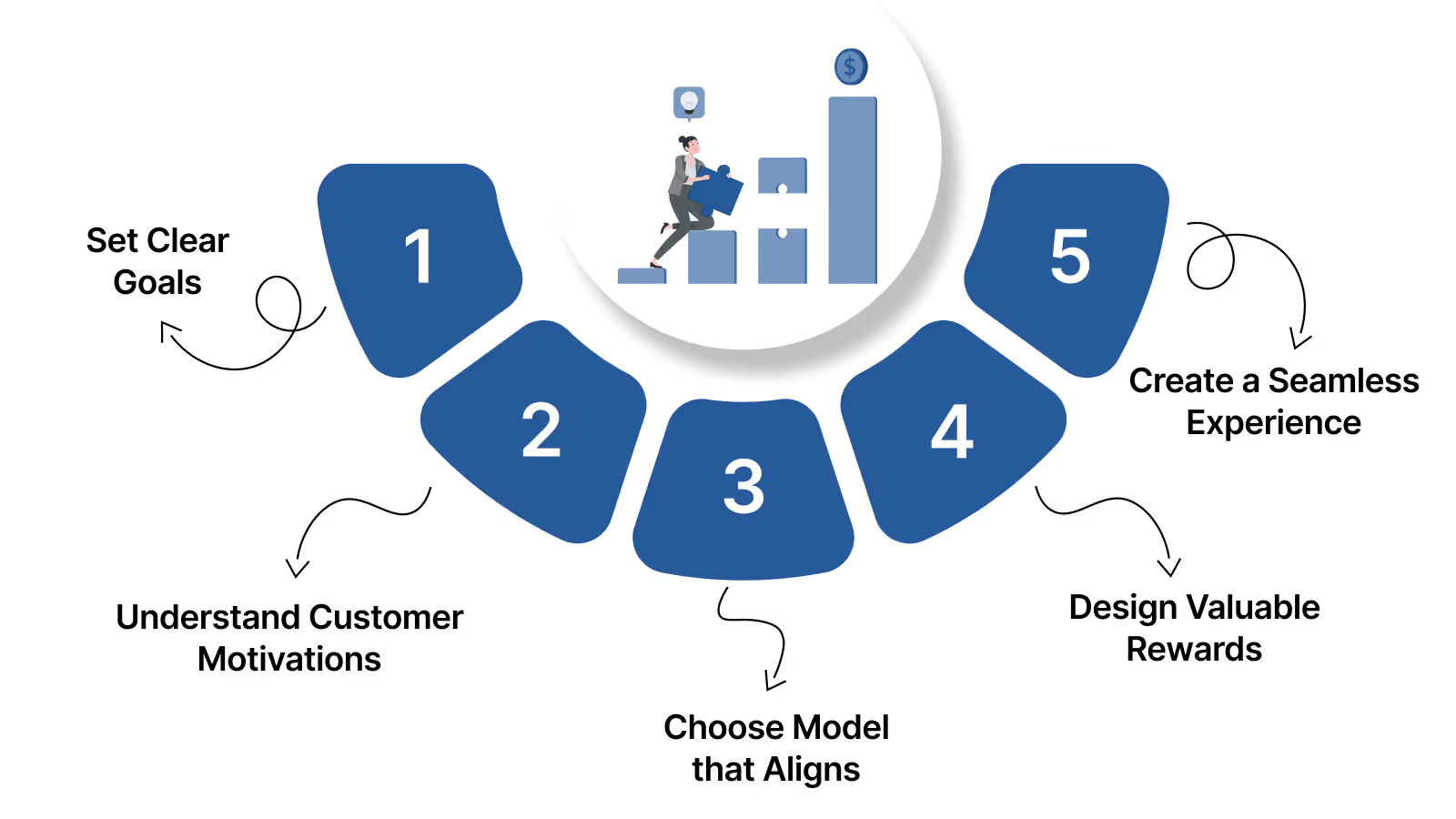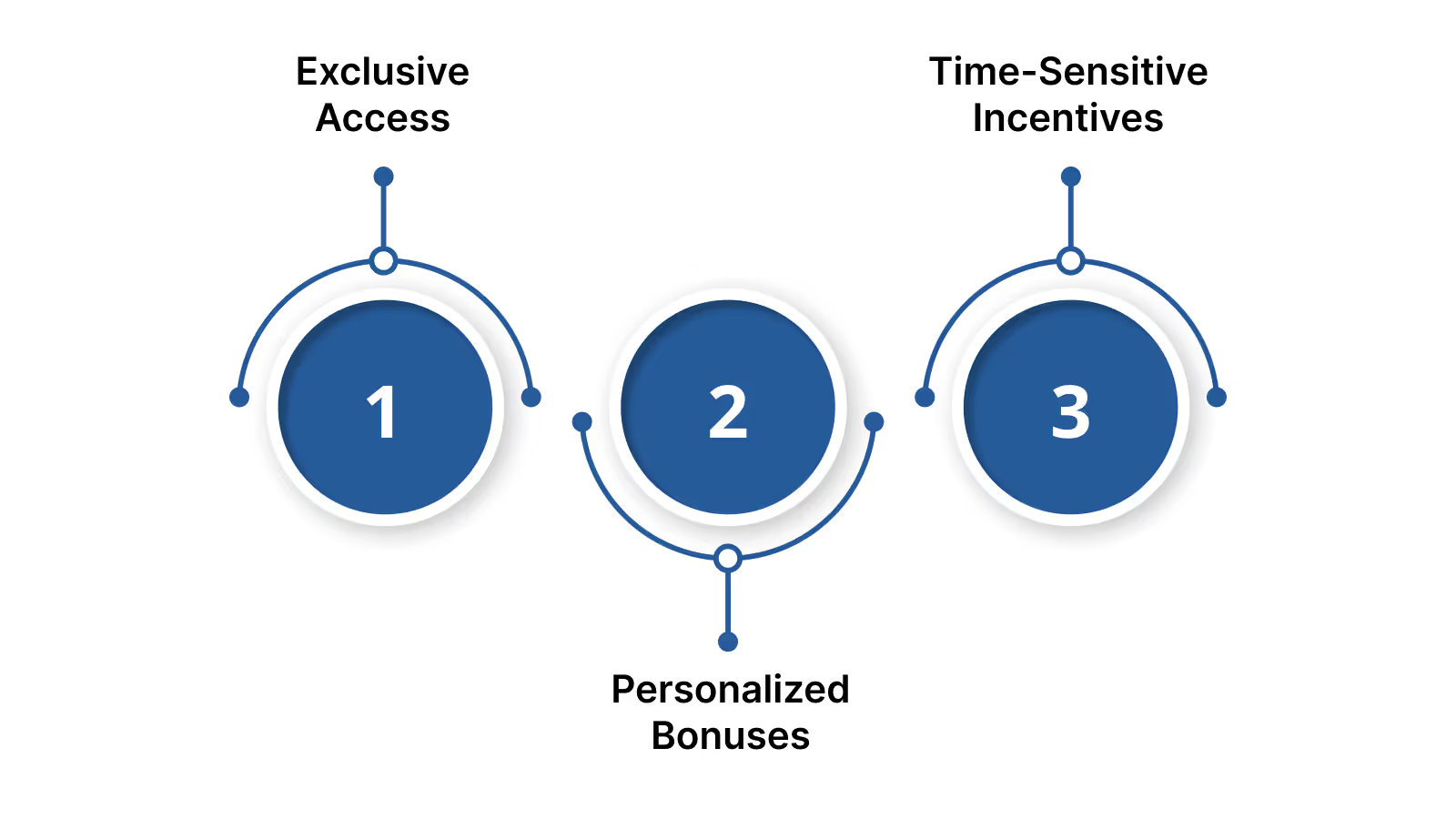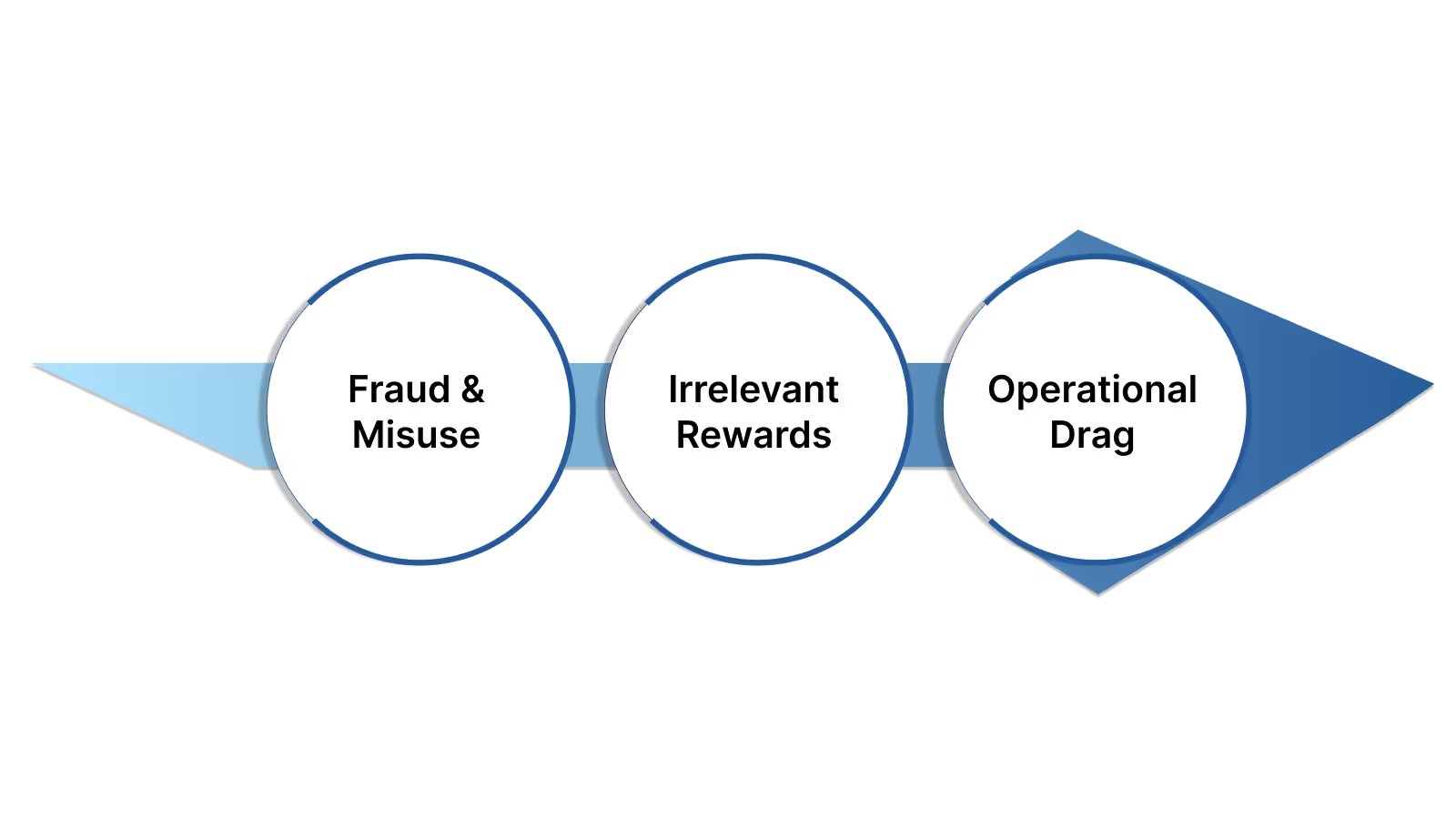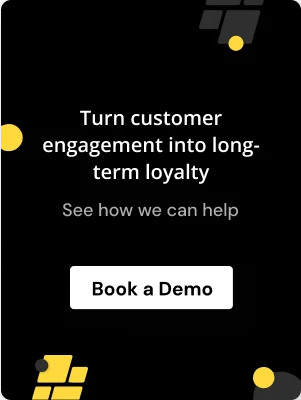.avif)
.avif)
Growing an e‑commerce brand today can feel less like building a business and more like trying to sprint on a treadmill that keeps speeding up. Research shows customer acquisition costs have surged by 222%, pushing e‑commerce brands to refocus on profitability and driving more repeat sales.
If you’re running a founder‑led or mid‑size DTC brand, you’ve probably felt this pressure firsthand. Every quarter starts with the same challenge: how do you replace lost customers without sacrificing your margins? Traditional discounting only takes you so far; shoppers will take the coupon and move on to the next best deal.
This is where loyalty pricing stops being a “nice add‑on” and starts becoming a survival strategy. Instead of endlessly chasing new buyers, it gives you a way to reward consistent engagement and turn one‑time shoppers into long‑term customers. Done thoughtfully, it doesn’t just protect your margins; it changes how customers experience your brand, making them more likely to stay, spend more, and advocate for you.
But before you can implement it effectively, you need to understand what loyalty pricing means and how it can fit into your business.
TL;DR
- Customer acquisition costs are up 222%, making retention essential.
- Loyalty pricing rewards repeat customers with structured value instead of blanket discounts.
- Core models include tiered pricing, points-based systems, and behavior-based rewards.
- Success requires clear goals, meaningful rewards, and a seamless customer experience.
- Common challenges include fraud, irrelevant rewards, and heavy manual management.
What Is Loyalty Pricing?
Loyalty pricing is more than occasional discounts. It’s a structured way to reward your most engaged customers with real value. This could include member‑only pricing, redeemable points, cashback for repeat orders, or early access to new products. Unlike blanket promotions, loyalty pricing gives people a reason to keep coming back. For example, a frequent shopper might unlock faster rewards or free shipping, while a referrer could gain access to exclusive perks.
Its strength lies in flexibility. You can shape it around what your customers value - savings, recognition, or unique experiences, while keeping it practical for your team to manage. With that foundation in place, the next step is understanding why loyalty pricing has become such a critical part of growth strategies for modern e‑commerce brands.
Why Loyalty Pricing Is Critical for Customer Retention
Customer retention isn’t just a growth lever; it’s a safeguard for your business. As acquisition costs continue to rise and competitors fight for the same audiences, keeping your best customers becomes the difference between building steady, predictable revenue and constantly scrambling to replace churn.
Loyalty pricing helps you address this head‑on. It works in three key ways:
- It gives customers a reason to come back: When pricing is tied to engagement, whether through points, exclusive discounts, or status‑based perks, customers can see the value of staying with you rather than drifting to a competitor.
- It boosts customer lifetime value: Regular shoppers who earn better rewards or unlock higher tiers tend to spend more over time, making each customer more profitable without added acquisition costs.
- It strengthens the relationship: Customers feel acknowledged when their loyalty translates into meaningful benefits. That recognition deepens their connection to your brand beyond simple transactions.
This approach relieves the pressure to chase new audiences for smaller teams. Instead of pouring resources into short‑term campaigns, you build a stable base of customers who return by choice. For larger brands, loyalty pricing also becomes a strategic tool for segmentation, allowing you to tailor offers based on customer value, engagement level, and buying behavior at scale. Now, let’s break down the core models you can use to design a structure that truly fits your business and your customers.
Core Loyalty Pricing Models

The choice here isn’t about what looks exciting on paper; it’s about designing a system that aligns with your customers’ motivations and your team’s capacity to manage it. Below are three proven approaches, each suited for different needs.
1. Tiered Pricing Model
Tiered pricing is highly effective for brands looking to build deeper engagement among their most valuable customers. It creates a clear progression, for instance, Silver, Gold, and Platinum levels that customers can climb by spending more or engaging consistently. This turns loyalty into a journey, not just a transaction, and gives customers a sense of exclusivity and achievement.
When it’s right for you:
- You want to create differentiated experiences for high-value customers.
- You need a clear structure for segmenting customers based on behavior or spend levels.
Consider a skincare brand where top-tier members gain early access to launches, enjoy bonus points per order, and receive invitations to private events. Managing this manually would be complex, but platforms like Nector enable you to set automated tier rules, track movement between levels, and deliver personalized benefits at scale without adding operational drag.
2. Point-Based Pricing
Points systems are simple, transparent, and easy for customers to grasp. They reward a variety of actions from purchases to referrals, encouraging engagement at multiple touchpoints. Because the value of points is visible and redeemable, customers are reminded of what they stand to gain every time they interact with your brand.
When it’s right for you:
- You want a program that’s straightforward to communicate.
- You’re aiming to incentivize more than just purchases — for instance, reviews, referrals, or social engagement.
Imagine an apparel brand where customers earn points for creating wishlists, sharing posts, or leaving reviews. The challenge for many teams is tracking these activities and updating balances without friction.
3. Usage- and Behavior-Based Pricing
Some brands need to incentivize behaviors beyond purchasing, for example, maintaining a subscription, logging activity in an app, or participating in community events. This model drives meaningful engagement by recognizing actions that strengthen the customer relationship over time.
When it’s right for you:
- You offer subscriptions or services where long-term participation is the goal.
- You need to encourage behaviors that build deeper ties with your brand.
These models don’t have to exist in isolation. Some of the most effective loyalty strategies combine them by layering points over a tiered structure or blending behavior-based rewards with exclusive perks. The key is to choose an approach that reflects your growth priorities and resonates with your customers.
Also read: Maximizing Growth with CLV: A Strategic Loyalty Approach
How to Design and Apply a Loyalty Pricing Strategy

Building a loyalty pricing strategy is about more than just offering discounts or points. It requires a clear plan that aligns with your business goals, understands what motivates your customers, and structures rewards that genuinely encourage repeat engagement.
Here’s a practical step-by-step approach to designing and applying an effective loyalty pricing strategy:
1. Set Clear, Measurable Goals
Before creating any program, clarify what success looks like. Are you aiming to increase repeat purchases, boost average order value, improve customer lifetime value, or reduce churn?
Knowing your primary goal shapes every decision from the type of rewards you offer to how you communicate them.
For example, a brand focused on repeat purchases might design rewards that encourage frequent small orders, while one aiming to increase average spend might offer tiered benefits tied to higher spending levels.
2. Understand Your Customers’ Motivations
Loyalty programs work best when the rewards match what your customers value. This requires analyzing purchase behavior, surveying customers, or testing different incentives to see what drives engagement.
Ask yourself:
- Do your customers prefer immediate discounts, exclusive experiences, or status recognition?
- Are non-purchase actions like referrals or reviews important for your business?
Tailoring your program around these insights helps create offers that motivate meaningful behavior changes.
3. Choose the Loyalty Model That Aligns with Your Goals
Your business context determines which loyalty pricing model fits best:
- Tiered Programs work well when status motivates customers. For example, a tiered system where customers unlock “Gold” or “Platinum” status after spending certain amounts can increase both loyalty and average spend.
- Points-Based Systems suit businesses wanting to reward a range of actions beyond purchases like reviews, referrals, or social shares.
- Behavior-Based Rewards target ongoing engagement, ideal for subscription services or brands encouraging specific customer actions over time.
It’s common for brands to combine models, layering points on top of tiered levels to keep customers engaged on multiple fronts.
4. Design Rewards That Encourage Action and Feel Valuable
Generic discounts rarely change long-term behavior. Your rewards should be meaningful enough to encourage customers to act, but structured to maintain program sustainability.
Options include:

- Exclusive access or experiences, such as early product releases or members-only events.
- Personalized bonuses, like extra points for loyal customers hitting milestones.
- Time-sensitive incentives that create urgency, such as points expiring after a certain period.
For example, a coffee subscription service might reward customers who maintain active subscriptions for six months with bonus points or exclusive blends.
5. Create a Seamless and Transparent Experience
No matter how well-designed your program is, it will falter if customers can’t easily track or redeem rewards. Your program should communicate progress and available rewards at key touchpoints: product pages, checkout, and post-purchase communications.
Automating these touchpoints reduces manual work for your team and keeps customers engaged. Platforms like Nector support this by displaying real-time point balances and tier status throughout the shopping journey, allowing customers to see exactly how close they are to their next reward. This clarity drives continued participation without your team needing to manually update customers.
Even the best strategy can fall short without a platform built to handle the operational demands. Managing multiple tiers, reward types, and communications manually creates inefficiencies and risks errors that can undermine the customer experience. With Nector, you can set up earning rules, automate VIP tier upgrades, and apply smart coin expiry so customers see their progress toward rewards, motivating repeat purchases while reducing your team’s manual workload.
But even with these capabilities, designing a loyalty program is only half the battle. Running it effectively without it turning into a drain on resources or missing the mark with customers brings its own set of challenges.
Common Challenges and Practical Solutions

On paper, loyalty pricing seems simple: set up a points system, offer a few perks, and watch customers return. In reality, it rarely works out that cleanly. Many operators, especially founder-led and mid-size D2C teams, find themselves stuck in the same frustrating loop: manual work, underwhelming results, and programs that quietly drain resources instead of driving growth.
Let’s break down the most common challenges and what it takes to solve them.
1. Fraud and Misuse
Imagine you run a referral program and start seeing a spike in sign-ups. At first, you think it’s working until you notice that many of these accounts are duplicates created to exploit the reward system. Or that referral codes are circulating in discount forums instead of being shared by real advocates. These issues are subtle but damaging. They inflate your numbers, skew your data, and eat into margins without actually building true loyalty.
Why It Matters:
Unchecked fraud not only reduces ROI but also creates operational headaches as your team spends time auditing transactions instead of focusing on strategy. The ideal solution isn’t more manual policing; it’s building automated guardrails.
This means having a system that:
- Flags suspicious behavior like duplicate sign-ups or unusual redemption patterns.
- Enforces smart rules for referrals and redemptions without manual oversight.
Brands use Nector to automatically detect irregular activity and apply protective rules like limiting referrals per account or setting dynamic reward expirations. This keeps programs clean without requiring daily oversight from your team.
2. Irrelevant Rewards
It’s tempting to throw out generic discounts or basic points, but if your rewards don’t align with what motivates your customers, they won’t drive loyalty. For example, a VIP shopper who values exclusivity won’t be swayed by a $5 coupon. And casual shoppers may never accumulate enough points to feel invested.
When rewards feel irrelevant, customers disengage. They may sign up for the program, but it doesn’t change how often they purchase or how much they spend. Rewards need to match customer psychology, offering value beyond simple discounts.
This can include:
- Tiered programs that unlock status-based perks for your top spenders.
- Personalized offers that reflect a customer’s shopping behavior.
- Early access or exclusive experiences that make loyalty feel aspirational.
With Nector, brands design tiered loyalty structures and behavior-driven offers, making rewards feel relevant at every stage of the customer journey. Instead of one-size-fits-all discounts, you can build programs that motivate your high-value customers and engage casual ones differently.
3. Operational Drag
Many loyalty programs fail not because of strategy, but because of execution. Teams end up buried in spreadsheets, manual reconciliation, and endless support tickets related to points, referrals, and redemptions. What should be a retention driver becomes an operational burden.
Why It Matters:
Manual oversight slows down your ability to respond to customer needs, adapt to trends, or run new campaigns. It also burns out lean teams who are already stretched thin. The ideal loyalty program should run on autopilot, surfacing only the insights your team needs to make informed decisions.
Automating repetitive workflows like reward reminders, point expirations, and balance updates ensures the program keeps running smoothly without daily intervention. Nector gives operators real-time dashboards for tracking repeat purchase rate, redemption activity, and lifetime value.
It also automates point expirations and reward reminders, reducing manual work and freeing your team to focus on growth initiatives instead of program maintenance.
Each of these challenges - fraud, irrelevant rewards, operational drag chips away at your program’s effectiveness. Fixing them is more than a matter of efficiency. It’s about turning your loyalty program into a revenue driver, not an expense.
And with the right infrastructure, one that automates guardrails, personalizes rewards, and centralizes insights, you can make loyalty pricing a sustainable, high-impact part of your growth strategy.
Also read: Decoding Loyalty Program Reviews: What To Consider
How to Choose the Right Tools for Your Loyalty Pricing Strategy
Even the most well-designed loyalty pricing model will struggle to succeed without the right infrastructure. You can create a thoughtful tiered system or points-based framework, but if your team is buried in spreadsheets trying to track redemptions, verify referrals, and keep customers updated, the program quickly becomes more of a burden than a growth driver.
This is why selecting the right platform is as important as designing the program itself. The right tool should simplify operations, give you clear visibility into customer behavior, and scale with you as your needs evolve without adding extra layers of complexity.
What to Look for in a Platform
When evaluating tools, it helps to map features to your stage of growth:
- For lean teams: Prioritize platforms that are quick to set up, require minimal ongoing management, and automate repetitive tasks like reward tracking, suspicious activity detection, and customer notifications.
- For scaling brands: Look for advanced features such as segmentation, multi-tier management, and integrations across your existing channels. As your customer base grows, personalization becomes more important, and it can’t be managed manually.
- For long-term growth: Platforms that bring together loyalty, referrals, and reviews in one place often provide a cleaner, more complete picture of customer engagement while reducing tool sprawl and data silos.
320% More Orders—The Loyalty Strategy Behind a Top Ayurvedic Brand’s Growth
A leading Ayurvedic wellness brand in the lifestyle and personal care space recently implemented a loyalty program to strengthen customer retention and encourage repeat purchases.
Partnering with Nector in December 2023, the brand designed a multi-touchpoint rewards system that offered cashback on purchases, additional points for product and photo reviews, and incentives for successful referrals. Customers could also view their point balance directly while shopping, thanks to a seamless integration with the brand’s product display pages.
A dedicated loyalty landing page, along with consistent communication via WhatsApp and email, ensured that users stayed informed and engaged. Over 11 months, the program delivered significant results: a 320% increase in monthly orders, a 32.5x return on investment, and a participation rate that peaked at 8.67%.
Loyalty program members also spent more, with average order values nearly 30% higher than non-members. This case highlights how a thoughtfully structured loyalty initiative, backed by automation, personalization, and real-time visibility, can translate into real business growth.

Conclusion
Loyalty pricing works best when it feels less like a discount tactic and more like a relationship strategy. When you reward customers based on how they engage, whether that’s frequent purchases, referrals, or long‑term commitment, you shift the focus from chasing new buyers to deepening trust with the ones you already have.
The challenge, of course, is execution. Building a program that’s both meaningful for customers and manageable for your team takes the right structure and tools. That’s where platforms like Nector help give you an integrated way to design, automate, and measure loyalty programs without adding to your workload.
If you’re considering loyalty pricing as part of your growth strategy, now is the time to start. Book a demo and explore how you can make retention a revenue driver, not an afterthought.
FAQs
What is loyalty pricing, in simple terms?
Loyalty pricing is a structured way to give repeat customers better value than one‑time shoppers. This can take the form of points they can redeem, tiered memberships that unlock exclusive perks, or even personalized offers based on how they interact with your brand.
Which model should I choose?
If you want something simple and easy to manage, a points‑based program works well. If your customers are motivated by exclusivity and status, tiered programs create a sense of progression. And if you run a subscription or service‑driven brand, behavior‑based pricing lets you tailor rewards based on specific actions or milestones.
How do I measure success?
You’ll want to track metrics that reflect actual customer behavior, not just sign‑ups. Start with the repeat purchase rate to see if customers are coming back more often. Redemption rates tell you whether rewards are meaningful enough for customers to use. Keep an eye on average order value (AOV) and customer lifetime value (LTV), these show whether your loyalty program is driving higher‑value engagement over time.
Can I run loyalty, referral, and review programs together?
Absolutely. Combining them often creates stronger results because each program reinforces the other. Platforms like Nector make this easier by managing loyalty, referral, and review workflows in a single dashboard, so you don’t have to juggle multiple tools.
How quickly can I launch a program?
The setup can be surprisingly fast. With the right platform, some brands go live in under an hour. That said, the real work is in planning, mapping out your goals, deciding which behaviors to reward, and ensuring the program feels aligned with your brand.
Start Building Customer Retention That Lasts





.webp)
.webp)


